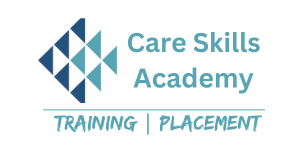Drones have taken the world by storm, revolutionizing industries from photography to agriculture, logistics, and even defense. With their increasing popularity and applications, the demand for skilled drone technicians is growing rapidly. If you have a passion for technology and a fascination with drones, a drone repairing course could be your gateway to a thriving and future-ready career.
Why Choose a Drone Repairing Course?
Drones are sophisticated machines that combine aerodynamics, electronics, and software. As with any advanced technology, they are prone to wear and tear or technical malfunctions. Whether it’s a camera malfunction, motor failure, or software issue, drones require regular maintenance and repair. With more people using drones for personal and commercial purposes, the market for drone repair services is expanding.
A drone repairing course equips you with the necessary skills to troubleshoot, repair, and maintain drones efficiently. By learning how to diagnose problems and implement effective solutions, you can provide critical services for drone owners and businesses alike.
What to Expect in a Drone Repairing Course
A comprehensive drone repairing course will cover a wide range of topics, providing both theoretical knowledge and hands-on experience. Here’s a breakdown of what you might learn:
- Understanding Drone Components: The course will begin by introducing you to the basic components of a drone, including motors, propellers, flight controllers, batteries, cameras, and GPS systems. Understanding how these parts work together is crucial for effective troubleshooting.
- Troubleshooting Common Issues: Learn to diagnose and fix common drone problems, such as motor issues, propeller damage, gimbal malfunctions, or battery failures. The course will teach you how to detect electrical and mechanical faults and provide the tools to repair them.
- Software and Firmware Updates: Drones rely heavily on software for flight control and operation. You will learn how to install firmware updates, resolve software glitches, and ensure that the drone is operating with the latest system.
- Soldering and Circuit Repair: Often, repairing drones requires basic electronics skills, such as soldering. You’ll gain experience in replacing damaged circuits, reconnecting wires, and ensuring the drone’s electrical systems are functioning properly.
- Safety and Compliance: Understanding drone regulations and safe operating practices is essential. A good course will provide training on legal compliance, safety standards, and how to properly test a drone after repair to ensure it’s flight-ready.
Career Opportunities After Completing the Course
After completing a drone repairing course, you will be equipped to work in various sectors. You can start your own repair business, join a drone service company, or work as a freelance technician. The skills learned can also be applied to drone customization, enhancing performance for specialized applications like aerial photography or agricultural surveying.
With the drone industry projected to grow exponentially in the coming years, learning how to repair these high-tech machines offers a stable and exciting career path.
Conclusion
A drone repairing course is an excellent investment for anyone passionate about technology, repair, and innovation. By gaining the expertise to fix and maintain drones, you’ll position yourself in a booming industry with numerous opportunities. As drones continue to evolve, the demand for skilled technicians will only increase, making now the perfect time to dive into the world of drone repair.

